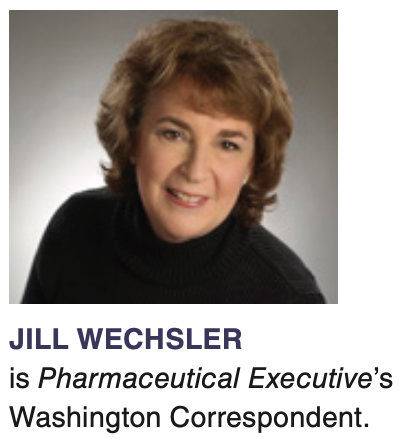FDA, Industry Move to Finalize New Drug User Fee Programs

Following several months of negotiations involving regulators, industry, and patient and consumer advocates, updated programs supporting the development and review of prescription medicines are being readied for approval by federal agencies and ultimately by Congress. The fee programs so critical to FDA operations for regulating drugs and other medical products must be renewed every five years, this time in 2022, and the negotiators are finalizing “commitment letters” that spell out what industry will pay and what policies and programs FDA will implement with those funds, to be referenced in implementing legislation.
Although it may seem that there’s plenty of time to finalize new user fee packages and to gain legislative approval before the current authority expires in Sept. 2022, there is pressure to move forward the separate fee plans for drugs and biologics, generic drugs, and biosimilars; the legislators usually look to authorize the new fees as part of a broader bill enacting a host of projects and requirements for drug regulation, development, and marketing, possibly including an update of the 21st Century Cures Act, which opens the door to lengthy discussion.
FDA kicked off the fee negotiating process for renewing the Prescription Drug User Fee Act (PDUFA VII) at a public meeting in July 2020 and formed subgroups for manufacturing and inspections, digital health and informatics, finance, regulatory decision tools, and pre- and post-market review to review specific issues. A main topic has been the need to increase fee revenues allotted to the Center for Biologics Evaluation and Research (CBER) to provide additional support and resources to oversee a fast-expanding volume of applications for cell and gene therapies. And industry continues to press FDA for progress in hiring and retention of a “world-class technical and scientific staff.”
PDUFA agreements also direct CBER and the Center for Drug Evaluation and Research (CDER) to utilize fee revenues to streamline and manage multiple meetings with sponsors and to advance rare disease therapies and the use of real-world evidence, model-informed drug development, and complex clinical trial designs. The program will continue support for innovative manufacturing technologies, enhanced oversight of post-market drug safety, and expanded use of digital health technologies and bioinformation to streamline operations.
All these initiatives will continue to boost industry fees, with drug application fees slated to reach $4 million by 2027, up from nearly $3 million today. This increase continues the steady rise in the portion of FDA operations funded by industry user fees, which now account for about half of the agency’s budget for regulating drugs and biologics. While some observers complain that this gives industry too much influence over FDA decisions, Congress seems fairly content with the arrangement, and FDA officials maintain that the reliance on fee revenues does not sway approval decisions.
Fees for generics, biosimilars, OTCs
Negotiations also are winding up for reauthorization of the Generic Drug User Fee Amendments (GDUFA III), with discussions focusing on plant inspection processes, drug master file use, application review goal dates, and enhancements to the inactive ingredient database. Main initiatives aim to facilitate the review of complex generics and to achieve more application approvals in the first review cycle. Similarly, FDA is considering revisions to the Biosimilar User Fee Act (BsUFA III) to further streamline the approval process and facilitate patient access to less costly biotech therapies. That discussion began with a public meeting in November 2020, where FDA officials acknowledged interest in better managing meetings with sponsors, while manufacturers emphasized the importance of building a capable staff to manage this program and to upgrade information technology supporting BsUFA. Consumer advocates would like FDA to address how current reimbursement policies and misinformation stymies biosimilar marketing, but that may lie outside the user fee agreement.
Separately, FDA is launching its new user fee program for over-the-counter (OTC) drugs, after agreeing to drop levies on manufacturers that jumped in last year to produce hand sanitizer to combat the spread of COVID-19. FDA included such fees in its December 2020 announcement governing the new OTC monograph drug user fee program, but an outcry from firms such as liquor distillers forced FDA to drop fees for companies that only produce hand sanitizer in response to the public health emergency.
Jill Wechsler is Pharm Exec’s Washington Correspondent. She can be reached at jillwechsler7@gmail.com.

Pfizer, GSK Gain ACIP Recommendations for RSV and Meningococcal Vaccines
April 18th 2025The Centers for Disease Control and Prevention’s Advisory Committee on Immunization Practices voted to expand access to Pfizer’s respiratory syncytial virus vaccine Abrysvo for high-risk adults in their 50s and voted in favor of GSK’s meningococcal vaccine, Penmenvy, for streamlined adolescent protection.
Navigating Distrust: Pharma in the Age of Social Media
February 18th 2025Ian Baer, Founder and CEO of Sooth, discusses how the growing distrust in social media will impact industry marketing strategies and the relationships between pharmaceutical companies and the patients they aim to serve. He also explains dark social, how to combat misinformation, closing the trust gap, and more.